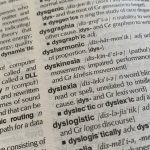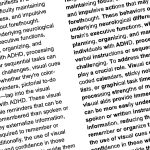Abstract
Behavioural, Emotional, and Social Difficulties (BESD) describe a range of interlinked challenges affecting children’s ability to interact with educational and social settings. This comprehensive analysis examines the nature of BESD, its manifestations, root causes, and the nuances of its presentation across genders, cultures, and over time. While behavioural issues manifest as disruption or withdrawal, emotional troubles encompass anxiety and depression, and social difficulties involve challenges in forming relationships. Multiple factors, from environmental to neurological, contribute to BESD’s onset. Recognising BESD is pivotal, emphasising an empathetic rather than judgmental approach. Early intervention, personalised educational strategies, therapeutic support, and fostering inclusive environments are pivotal in assisting these children. Furthermore, understanding BESD’s cultural variations and its evolution into adulthood is crucial. The ultimate goal is to empower children with BESD, ensuring they thrive academically and socially in mainstream schools and society.
Introduction
Behavioural, Emotional and Social Difficulties (BESD) encompass a wide spectrum of complex challenges that children face in their everyday lives. These issues, often interlinked, affect a child’s capacity to engage with educational and social environments, and thus, require specialised understanding and support. This essay delves into the definition of BESD, its intricacies, and the importance of recognising and supporting children with these difficulties.
What Does BESD Stand For?
BESD stands for Behavioural, Emotional and Social Difficulties. It’s a term used to describe a range of complex and interconnected challenges.
- Behavioural Difficulties: These manifest as disruptive, hyperactive, or withdrawn behaviours. A child might exhibit consistent patterns of disobedience, aggression, or even self-harm. It’s important to note that these are not just ‘bad behaviours’. They often emerge as a response to inner turmoil or external pressures.
- Emotional Difficulties: Children with emotional difficulties might experience feelings of anxiety, depression, or have difficulty regulating their emotions. These issues can hinder their ability to process information or engage in social interactions.
- Social Difficulties: Social challenges revolve around forming and maintaining relationships. Children might struggle with forming friendships, understanding social cues, or adhering to group norms. This can often lead to feelings of isolation or being misunderstood.
Children with BESD
Children with BESD often find the world around them perplexing, overwhelming, or even threatening. It’s important to understand that their behaviours or reactions are not simply acts of defiance or indifference. Instead, these reactions often spring from a place of distress, confusion, or an inability to process and respond to stimuli in the same manner as their peers.
There are several factors that contribute to the onset of BESD:
- Environmental Factors: These include factors like family breakdowns, abuse, neglect, or witnessing domestic violence. Such circumstances can profoundly impact a child’s emotional wellbeing and understanding of social norms.
- Neurological and Genetic Factors: Some children may be genetically predisposed to certain emotional or behavioural challenges. Additionally, conditions such as ADHD, Autism Spectrum Disorder, or Foetal Alcohol Syndrome can contribute to BESD.
- Mental Health Issues: Conditions like anxiety, depression, or attachment disorders can lead to BESD. Often, these mental health issues are a result of traumatic experiences or a combination of genetic and environmental factors.
Recognising a child with BESD is crucial. They may exhibit an inability to manage their emotions, act impulsively, show aggressive tendencies, withdraw from social interactions, or exhibit chronic sadness. However, it’s equally important to approach these signs with empathy. Labelling them as ‘troublemakers’ or ‘difficult’ can exacerbate their difficulties and further alienate them.
Supporting BESD Children
Supporting children with BESD requires a multi-faceted approach:
- Early Identification: Early intervention can make a significant difference. Recognising the signs and providing the necessary support can prevent these difficulties from escalating.
- Personalised Learning Plans: Given that BESD can affect a child’s academic performance, it’s vital to provide a tailored educational plan. This may include specialised teaching methods, additional resources, or the involvement of support staff.
- Therapeutic Support: Children with BESD benefit immensely from therapeutic interventions like counselling, play therapy, or cognitive behavioural therapy. These help them understand and manage their emotions better.
- Creating an Inclusive Environment: Schools and communities must work towards creating an environment where BESD children feel accepted, understood, and valued. This can be achieved by raising awareness, fostering peer support, and promoting empathy.
- Empowerment: Empower BESD children by teaching them coping strategies, self-regulation techniques, and resilience-building tools. When they have the skills to understand and manage their emotions, they are better equipped to face challenges.
- Family Involvement: The family plays a pivotal role in supporting a child with BESD. Regular communication between educators, therapists, and families can create a cohesive support system.
Are there gender disparities in the prevalence or presentation of BESD?
Gender disparities in the prevalence and presentation of Behavioural, Emotional, and Social Difficulties (BESD) are evident in various educational and clinical settings. Boys are frequently overrepresented in behavioural difficulty statistics, often being identified and referred for disruptive behaviours such as aggression or hyperactivity. Conversely, while girls may also experience BESD, their manifestations might lean towards internalising behaviours, like anxiety, depression, or withdrawal, which can sometimes be overlooked in structured environments. These differences are influenced not only by biological factors but also by societal and cultural norms that shape gender expectations. For instance, traditional views of masculinity might discourage emotional expression in boys, leading to potential under-identification of their emotional difficulties. On the other hand, disruptive behaviours in girls, which might manifest as relational aggression, could be less recognised compared to the overt disruptive behaviours often seen in boys. Recognising these gender disparities is crucial for accurate diagnosis and tailored intervention.
What specific techniques or strategies are most effective in supporting children with BESD in classroom settings?
In classroom settings, children with Behavioural, Emotional, and Social Difficulties (BESD) benefit from a combination of structured support and flexibility. Effective techniques include consistent and clear behavioural expectations, the use of positive reinforcement to encourage desired behaviours, and the implementation of individualised support plans tailored to each child’s needs. Incorporating visual schedules can provide predictability, while regular breaks can help manage overstimulation. Moreover, social skills training, peer mentoring, and collaborative problem-solving approaches empower these students to better navigate interpersonal challenges. Importantly, close communication between educators, therapists, and families ensures a cohesive support system, fostering an environment where BESD children can thrive academically and socially.
How does the BESD framework compare to other models or definitions of behavioural and emotional challenges in children?
The BESD (Behavioural, Emotional, and Social Difficulties) framework offers a holistic perspective on child challenges by acknowledging the interplay between behavioural, emotional, and social aspects. Unlike some models that might focus solely on behavioural disruptions or specific emotional disturbances, BESD encapsulates a broader spectrum of issues, emphasising their interconnectedness. This comprehensive approach is distinct from diagnoses like ADHD or anxiety disorders, which target particular symptoms or behaviours. Instead, BESD provides educators and caregivers with a lens that recognises the multifaceted nature of a child’s difficulties, prompting a more integrated intervention strategy rather than addressing singular, isolated challenges.
Are there preventive measures or early interventions that can reduce the risk or severity of BESD in susceptible children?
Early interventions and preventive measures can significantly reduce the risk or mitigate the severity of BESD in susceptible children. These include promoting secure attachment during infancy through consistent and nurturing caregiving, providing parenting training to enhance positive discipline strategies, and early identification of at-risk children for tailored support. School-based programs that emphasise social-emotional learning, resilience-building, and conflict resolution can foster adaptive behaviours and coping mechanisms. Additionally, ensuring children have access to safe, stable, and supportive environments, both at home and in educational settings, is crucial. By addressing potential triggers and vulnerabilities early on, these measures can pre-emptively counteract the development or exacerbation of BESD.
How does the understanding and approach to BESD vary across countries or cultures?
The understanding and approach to BESD (Behavioural, Emotional, and Social Difficulties) can differ widely across countries and cultures due to variations in societal norms, educational frameworks, and healthcare systems. While some cultures might prioritise collective harmony, leading to an emphasis on addressing social difficulties, others might focus more on individual behavioural or emotional challenges. Diagnostic criteria, intervention strategies, and the emphasis placed on formalised support can differ significantly. For instance, in Western cultures, there’s a tendency to lean on structured therapeutic interventions, while in some Eastern or indigenous cultures, community-based solutions and traditional healing practices may be favoured. These differences underscore the importance of culturally sensitive and adaptive approaches when addressing BESD in diverse settings.
How do BESD symptoms evolve or manifest differently in adults who had these challenges as children?
Adults who experienced BESD (Behavioural, Emotional, and Social Difficulties) during childhood often exhibit evolved manifestations of these challenges. While overt disruptive behaviours may decrease, underlying emotional and social struggles can persist, potentially leading to mental health issues like anxiety, depression, or interpersonal conflicts. Some adults might develop effective coping strategies and display resilience, especially if they received early interventions. However, others may grapple with self-esteem issues, difficulties in forming or maintaining relationships, or challenges in professional settings due to unresolved emotional and social hurdles. The trajectory from childhood BESD to adult manifestation underscores the importance of early recognition and intervention for long-term well-being.
How do mainstream schools integrate children with BESD, and what are the challenges and successes of such integrations?
Mainstream schools integrate children with BESD (Behavioural, Emotional, and Social Difficulties) through inclusive education strategies, offering tailored support within regular classrooms. This can include individualised education plans, classroom accommodations, and collaboration with specialists like school psychologists or counsellors. Challenges arise in balancing the needs of the BESD child with those of their peers, managing potential disruptions, and ensuring educators are adequately trained to handle diverse needs. However, successful integrations have demonstrated numerous benefits: BESD children can academically and socially thrive in an inclusive environment, peers develop empathy and understanding, and the school community becomes more representative of the broader society, promoting acceptance and reducing stigmas.
Conclusion
Behavioural, Emotional, and Social Difficulties (BESD) represent a multifaceted challenge that many children face. These difficulties are deeply intertwined and often stem from a myriad of causes. With an understanding, empathetic, and proactive approach, we can create a world where BESD children are not just supported, but empowered to thrive.
Further reading
The Complete Guide to Special Education: Expert Advice on Evaluations, IEPs, and Helping Kids Succeed by Linda Wilmshurst and Alan W. Brue.
This book offers a comprehensive look into the intricacies of special education, providing guidance on various aspects, including identifying and supporting children with a wide range of difficulties.
Lost at School: Why Our Kids with Behavioural Challenges are Falling Through the Cracks and How We Can Help Them by Ross W. Greene.
Greene delves deep into the challenges faced by children with behavioural difficulties, arguing for a collaborative approach to discipline that can be particularly beneficial for children with BESD.
Nurturing Natures: Attachment and Children’s Emotional, Sociocultural and Brain Development by Graham Music.
In this book, Graham Music delves into the developmental psychology of children, discussing the intricate relationship between nature and nurture. Drawing from a vast array of research, the book elucidates how early environments and attachments influence emotional, social, and brain development. Given its comprehensive coverage of emotional and social challenges, it can offer valuable insights into the underlying factors that contribute to BESD and ways to nurture children through these challenges.
The National Association for Special Educational Needs (NASEN)
NASEN promotes the advancement of individuals with special educational needs. They offer resources, training, and information on the topic.
Website URL: https://www.nasen.org.uk/
Council for Exceptional Children (CEC)
CEC is an international organisation dedicated to improving the educational outcomes of children with disabilities, including those with BESD. The site contains research, resources, and policy information.
Website URL: https://www.cec.sped.org/
Child Mind Institute
This organisation provides valuable resources on a variety of child mental health and learning topics, including behavioural, emotional, and social difficulties. The website has articles, guides, and tools for both parents and professionals.
Website URL: https://childmind.org/
Author Profile
Latest entries
 Resources2024.01.25Animals That Start With The Letter N
Resources2024.01.25Animals That Start With The Letter N Bionic Reading2023.09.22Bionic Reading for Dyslexia: A Potential Bridge to Enhanced Comprehension
Bionic Reading2023.09.22Bionic Reading for Dyslexia: A Potential Bridge to Enhanced Comprehension Bionic Reading2023.09.21Bionic Reading for ADHD: Harnessing the Power of Visual Cues to Aid Focus and Comprehension
Bionic Reading2023.09.21Bionic Reading for ADHD: Harnessing the Power of Visual Cues to Aid Focus and Comprehension Bionic Reading2023.09.20Bionic Reading Method
Bionic Reading2023.09.20Bionic Reading Method




